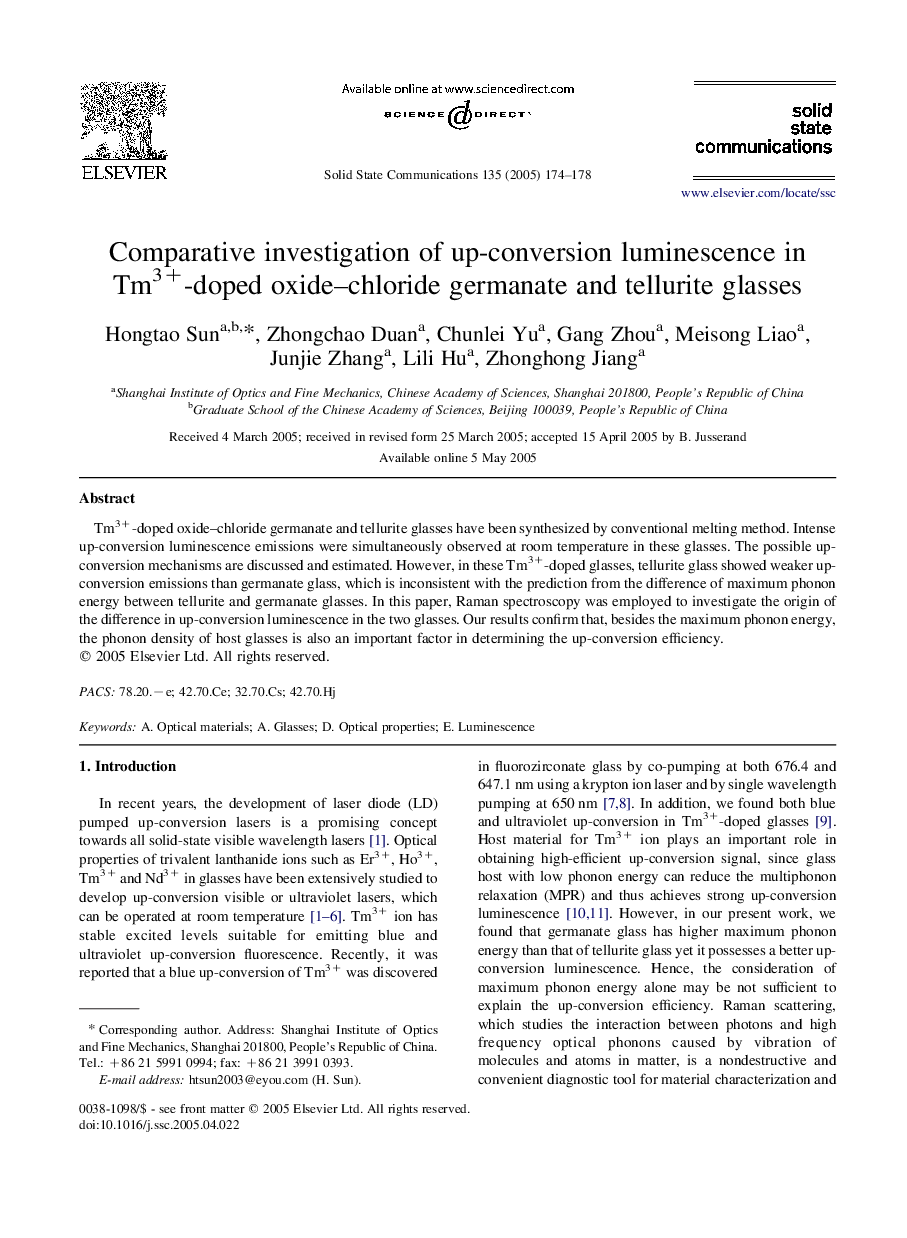| Article ID | Journal | Published Year | Pages | File Type |
|---|---|---|---|---|
| 10653223 | Solid State Communications | 2005 | 5 Pages |
Abstract
Tm3+-doped oxide-chloride germanate and tellurite glasses have been synthesized by conventional melting method. Intense up-conversion luminescence emissions were simultaneously observed at room temperature in these glasses. The possible up-conversion mechanisms are discussed and estimated. However, in these Tm3+-doped glasses, tellurite glass showed weaker up-conversion emissions than germanate glass, which is inconsistent with the prediction from the difference of maximum phonon energy between tellurite and germanate glasses. In this paper, Raman spectroscopy was employed to investigate the origin of the difference in up-conversion luminescence in the two glasses. Our results confirm that, besides the maximum phonon energy, the phonon density of host glasses is also an important factor in determining the up-conversion efficiency.
Keywords
Related Topics
Physical Sciences and Engineering
Materials Science
Materials Science (General)
Authors
Hongtao Sun, Zhongchao Duan, Chunlei Yu, Gang Zhou, Meisong Liao, Junjie Zhang, Lili Hu, Zhonghong Jiang,
